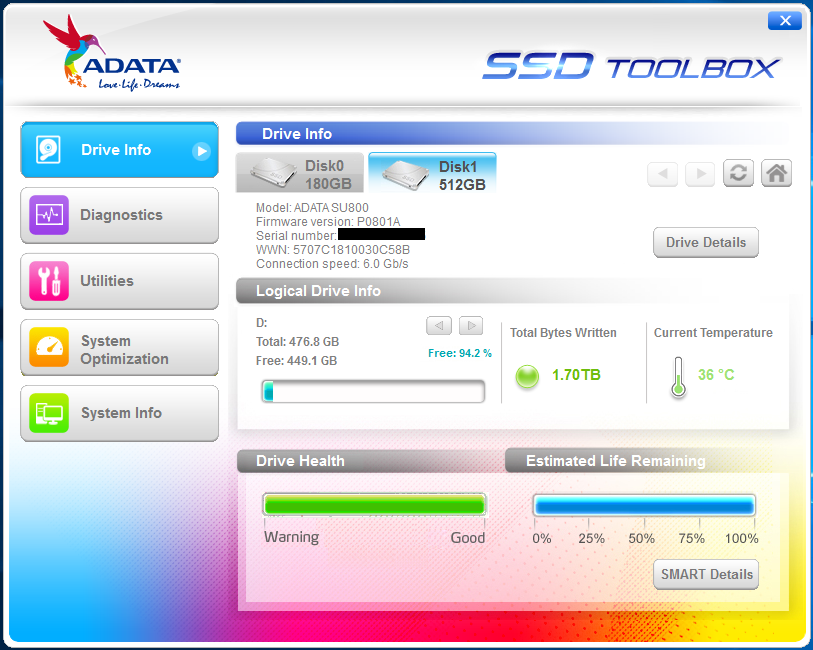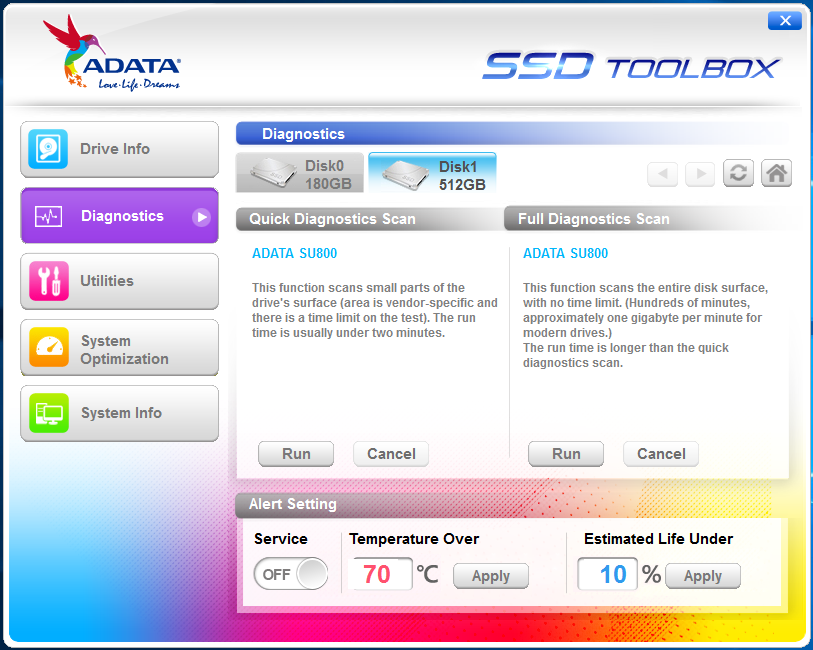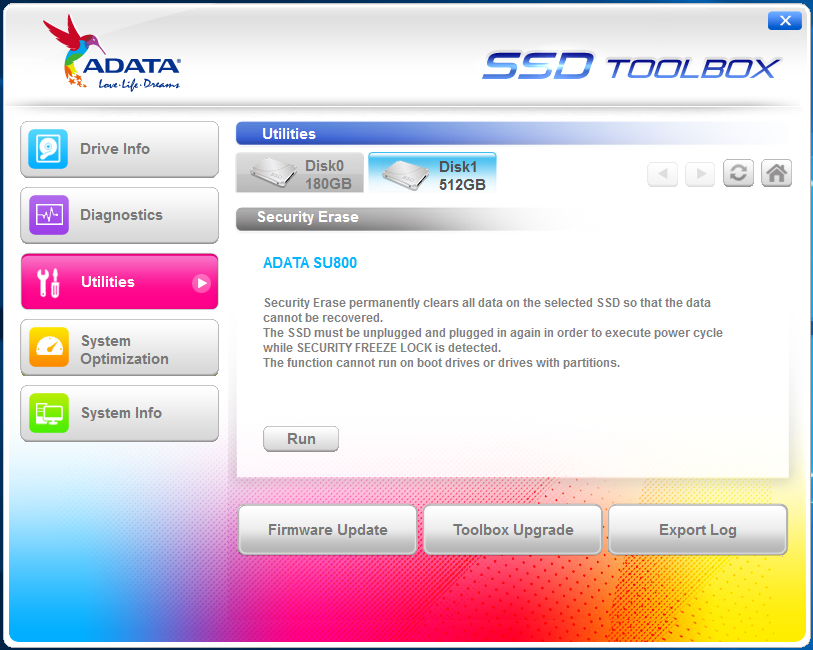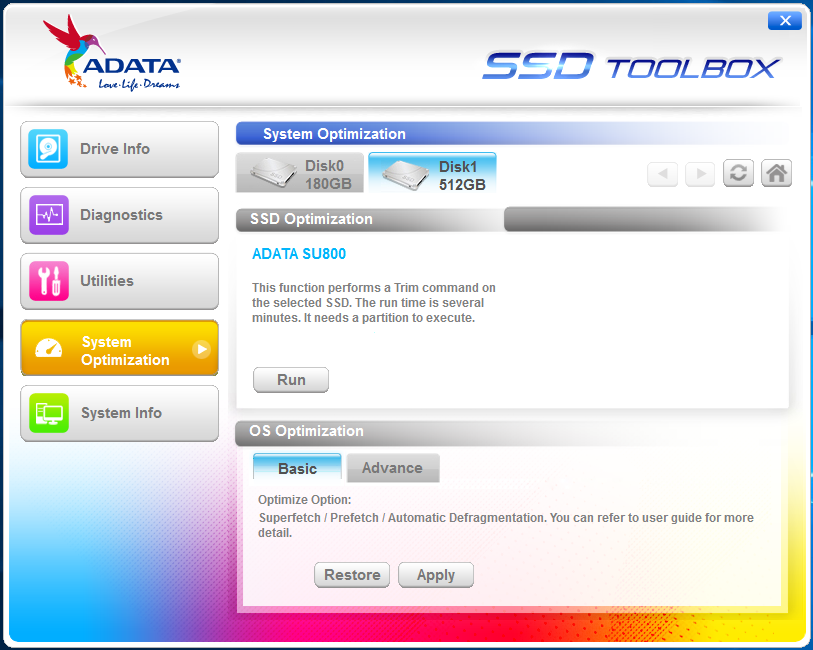- Qualcomm Launches Snapdragon 4 Gen 2 Mobile Platform
- AMD Launches Ryzen PRO 7000 Series Mobile & Desktop Platform
- Intel Launches Sleek Single-Slot Arc Pro A60 Workstation Graphics Card
- NVIDIA Announces Latest Ada Lovelace Additions: GeForce RTX 4060 Ti & RTX 4060
- Maxon Redshift With AMD Radeon GPU Rendering Support Now Available
ADATA Ultimate SU800 512GB SSD Review
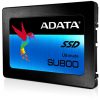
ADATA is a well-known flash storage company that offers the most prolific range of SSD models currently available on the market. While this makes it hard to determine which SSD is best for you, it also guarantees there’s a model at practically every price point. Is the midrange SU800 that offers better endurance and performance consistency worth the increase in price over budget models? We find out.
Page 1 – Introduction; ADATAs Ultimate SU800 512GB SSD
SATA SSDs are a funny thing. While an SSD is essential for having smooth, fast user experience, SATA SSDs have been interface bottlenecked for many years now.
As such, performance seekers and manufacturers have both moved on to the PCIe M.2 market, leaving the SATA SSD market focused almost entirely on value and budget offerings.
ADATA is one of the most prolific, and most aggressive solid-state drive manufacturers remaining in the SATA SSD space. Currently, there is the budget SP550, midrange SU800, performance SU900, gaming SX950, and several others such as the DRAM-less SP580. While I wouldn’t complain about having a large range of choices, it does make it tough to determine which models fit into which categories.
We already took a look at ADATA’s budget SP550 drive and came away impressed with its performance for casual workloads, given the segment-leading pricing. The SU800 we have today is a midrange drive, offering a bit more performance and higher NAND endurance at the expense of a slightly higher price.
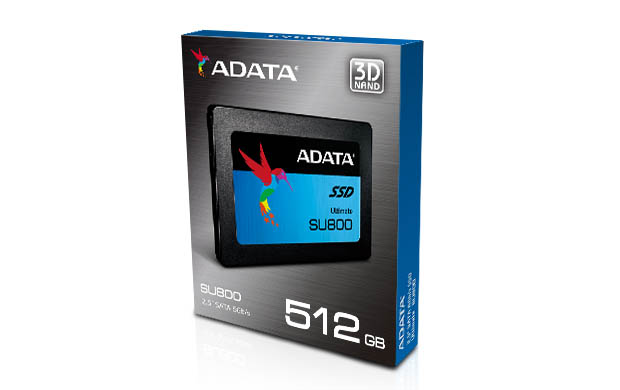
It is worth pausing to highlight the SU800’s use of 3D 384Gb NAND chips because it directly affects many drive metrics. For example, three dual-stacks are used on the 256GB model which totals 288GB of NAND capacity onboard (and 576GB on the 512GB model). This gives the SU800 a much higher amount of over-provisioning than one would see on even reduced capacity SSDs (think 240GB or 480GB). Selling the drive at 256GB or 512GB gives it more value on a cost/GB ratio and the over-provisioning will still ensure more consistent performance.
Besides providing additional space to wear-leveling, this heavy over-provisioning will help to minimize the write amplification factor, and all this combines to increase the total drive write endurance by a not-so-insignificant amount. We’re not talking Transcend 370S levels of endurance, but certainly more so than the ADATA’s SP550 or SP580 model drives can offer.
| 128GB | 256GB | 512GB | 1TB | |
| Form Factor | 7mm 2.5-inch (M.2 models available) | |||
| Interface | SATA 6Gbps | |||
| Controller | Silicon Motion SM2258 | |||
| DRAM | Nanya 128/256MB DDR3 | |||
| Flash NAND | Micron 3D TLC | |||
| Sequential Read / Write | 550 / 300 MB/s | 550 / 500 MB/s | ||
| 4K Random Read / Write | Up to 90K / 80K IOPS | |||
| Street Price | $45 | $75 | $160 | $270 |
| Warranty | Three Years | |||
Another factor resulting from the 384Gb NAND arrangement is the 128GB model doesn’t have enough chips to deliver full performance from the controller; this is reflected in the specifications table. In the future, as NAND chips continue to increase in capacity and 512Gb chips become mainstream, even 256GB capacity drives are going to suffer the same performance limitations as many 128GB models do today, so it’s something to be aware of when shopping for a new SSD.
ADATA offers a download of Acronis True Image HD for data migration use with its SSDs. Also available is ADATA’s SSD Toolbox software which provides firmware updates, secure erase functionality, OS optimization, drive status information, and of course diagnostic options. It also provides a quick “Total Bytes Written” indicator to easily satiate curiosity to total bytes written to the SSD.
| SSD Test System | |
| Processor | Intel Core i7-4771 @ 3.7GHz |
| Motherboard | ASUS Z97-A – BIOS 2801 |
| Memory | Crucial Ballistix 8GBx4 DDR3-1600 |
| Graphics | EVGA GeForce GTX 750 Ti SC |
| Audio | Onboard |
| Storage | ADATA SP550 480GB (SATA) ADATA Ultimate SU800 512GB (SATA) Intel 520 240GB (SATA) Intel 730 240GB (SATA) Kingston Predator 240GB (PCIe) Samsung 950 Pro 512GB (NVMe PCIe) Transcend SSD360S (SATA) |
| Power Supply | BitFenix Fury 650W |
| Chassis | Cooler Master HAF 932 |
| Cooling | Noctua NH-D14 |
| Et cetera | Windows 10 Pro x64 |
To ensure all drives have fair representation regardless of capacity, we use IOMeter to conduct continuous file writes beyond twice the rated capacity of each SSD. This will make sure every block has been written to at least once, including the unaddressable spare area present on all solid-state drives, ensuring all drives begin testing in a normalized “dirty” state.
SATA drives are tested on an Intel 6Gbps SATA port, while PCIe cards will use the PCIe Gen 3 x8 slot to the processor. M.2 drives will make use of a PCIe adapter card in this same slot to bypass the M.2 x2 interface bottleneck (some motherboards make use of a 2x PCIe lane M.2 port), allowing drives to utilize the maximum bandwidth (PCIe Gen 3 x4) that the M.2 interface supports. Where applicable, we will ensure drives are using the NVM Express protocol.
The test system’s processor has had Intel’s Speedstep and Turbo Boost functionality disabled and all cores are locked to the same 3.7GHz frequency in order to ensure maximum consistency between test runs.
Support our efforts! With ad revenue at an all-time low for written websites, we're relying more than ever on reader support to help us continue putting so much effort into this type of content. You can support us by becoming a Patron, or by using our Amazon shopping affiliate links listed through our articles. Thanks for your support!




